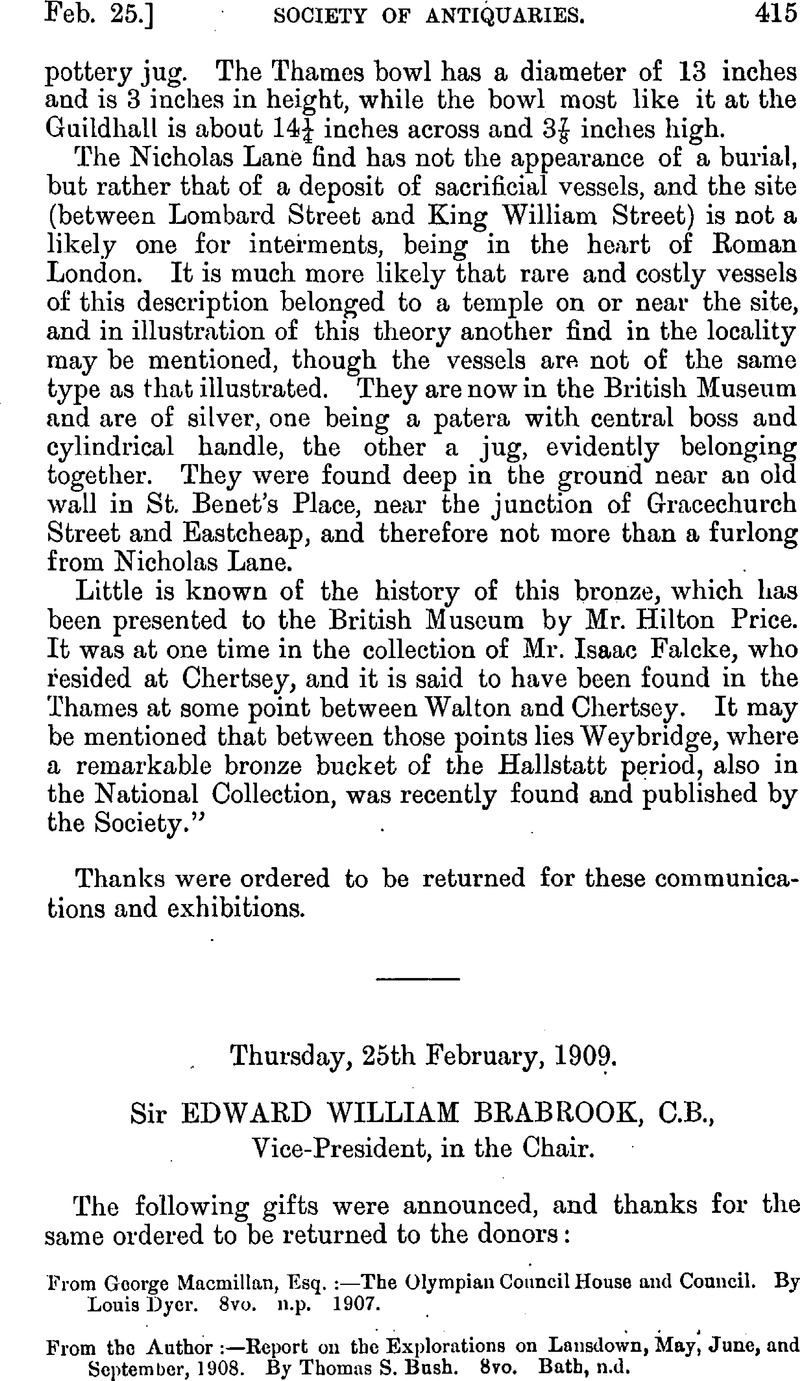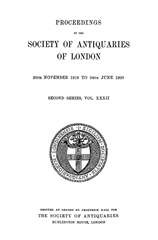No CrossRef data available.
Article contents
Thursday, 25th February, 1909
Published online by Cambridge University Press: 10 May 2010
Abstract

- Type
- Proceedings
- Information
- Copyright
- Copyright © The Society of Antiquaries of London 1909
References
page 416 note * Vol. lviii. 437–460.
page 417 note * Interim circa parietes Dunelmensis ecclesiæ jactis fundamentis cœpit aedificare habitacula monachorum habitationi congrua. Sed priusquam ea perficeret crudeli suorum manibus morte præventus est.
page 418 note * R.S. 75, i. 128.
page 420 note * See “An Account of Excavations made on the site of the Chapter-house of Durham Cathedral in 1874, by the Rev. J. T. Fowler, M.A. F.S.A., Local Secretary for Durham,” in Archaeologia, xlv. 385–404. Dr. Greenwell tells me he has reasons for believing that the chapter-house was originally Flambard's work, and that remains of it exist. He also points out that the chapter-honse was certainly begun and carried forward before Bishop Geoffrey's time.
page 425 note * As this matter has some practical interest, I may add details in a footnote. Dr. Baker tells me that he was led to the enquiry by noting that some battlements at Christ Church, restored 30 years ago in Doulting stone from the Chillinge bed, had become rotten, while some Bodleian battlements of Clipshum stone and of equal age were as good as new. Accordingly he procured blocks of each stone, 1 foot square, and tested them in his laboratory. He found the Doulting (Chillinge) stone very permeable to water, and the wet stone, when exposed to cold equivalent to only five degrees of frost, split at once ; Clipsham stone on the contrary was far less permeable, and the wet stone was unaffected by 25 degrees of frost. In Oxford, as the meteorological charts show, hard frosts very often suddenly follow on very wet weather, and accordingly the Doulting (Chillinge) stone is unsuited to it. In general, hard frosts follow dry spells of weather, and where that is the case Doulting stone may be used. Clipsham stone has a very fine grain and contains water only (as it were) in capillary tubes, and under such circumstances water will not freeze except when exposed to an almost unheard of degree of frost.
page 426 note * Memorials, i. Christ Church, p. 54, note.
page 426 note † Ed. Clark, ii. 164 foll.
page 427 note † H. L. Thompson, Christ Church (Robinson's College Histories), p. 227, and various living memories. Only one fragment (the Dean tells me) comes from the north bastion of the façade. The rest of the pieces now in the cathedral church were extracted from a well in the tiny courtyard just outside the south-west corner of the church.
page 428 note * Browne Willis, Survey of Cathedrals, p. 438. Half an acre of land next to these lodgings is called “ the Dean's Orchard ” in the schedule of lands made over to Christ Church by Henry VIII. in 1546.


